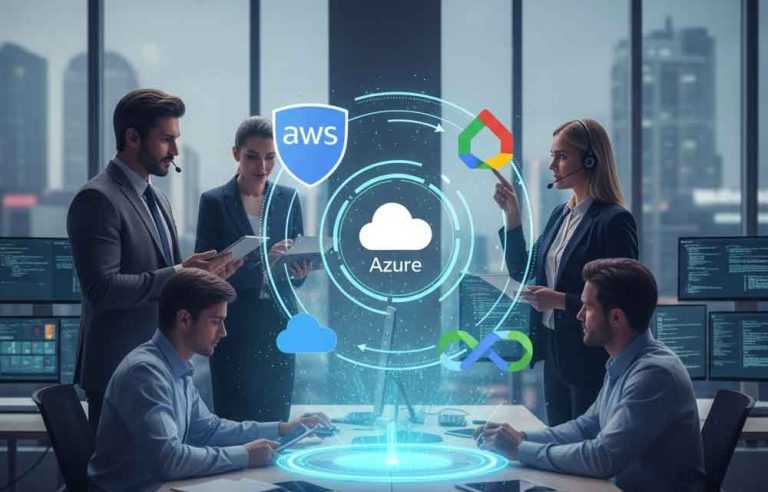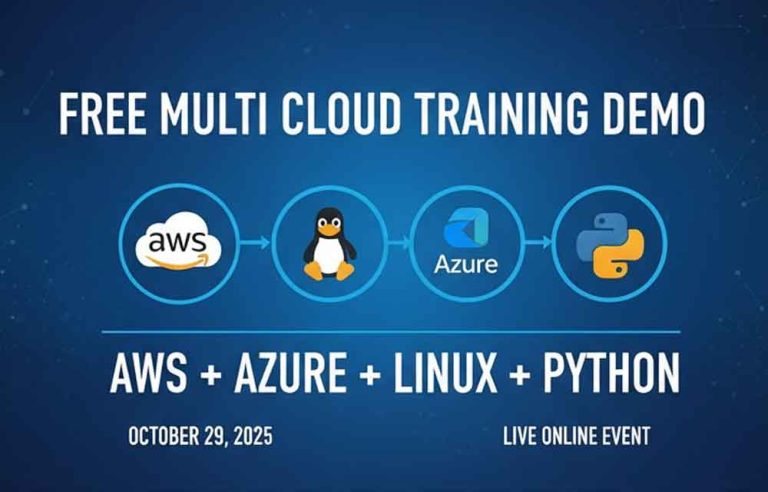Java Detailed Course Content
1. Introduction to Java
- History of Java
- Overview of Java Versions
- Features and Benefits of Java
- JVM, JRE, and JDK
- Java Development Setup (IDE & Tools)
2. Basic Java Programming
- Java Syntax and Data Types
- Variables and Constants
- Operators and Expressions
- Control Flow Statements (if, else, switch)
- Loops (for, while, do-while)
- Arrays and Strings
3. Object-Oriented Programming (OOP)
- Classes and Objects
- Methods and Constructors
- Inheritance, Polymorphism, Encapsulation, and Abstraction
- Static and Instance Members
- Final Keyword and Static Blocks
- Object Class, toString() and equals() methods
- Nested Classes and Interfaces
4. Exception Handling
- Types of Exceptions
- Try, Catch, and Finally
- Throw and Throws
- Custom Exceptions
5. Java Collections Framework
- Introduction to Collections API
- List, Set, and Map Interfaces
- ArrayList, LinkedList, HashSet, TreeSet, HashMap, TreeMap
- Iterator, ListIterator, and forEach
- Comparators and Comparables
- Collections Utility Methods
6. Multithreading in Java
- Creating Threads (Thread Class & Runnable Interface)
- Thread Lifecycle
- Synchronization
- Inter-Thread Communication
- Thread Pools and Executors
7. File I/O and Serialization
- File Handling using File Class
- Reading and Writing Files (InputStream, OutputStream)
- BufferedReader and BufferedWriter
- Serialization and Deserialization
8. Java 8 Features
- Lambda Expressions
- Functional Interfaces
- Stream API
- Default and Static Methods in Interfaces
- Optional Class
- Method References
9. Database Connectivity (JDBC)
- Introduction to JDBC
- Types of JDBC Drivers
- Connecting to Databases
- Executing SQL Queries
- ResultSet and Metadata
- PreparedStatement and CallableStatement
10. Advanced Java Concepts
- Reflection API
- Annotations
- Generics
- Enum Types
- Networking (Sockets, URL, HTTP)
- Java Web Services (SOAP, REST)
Java Spring Boot Detailed Course Content
1. Introduction to Spring Boot
- Overview of Spring Framework and Spring Boot
- Features of Spring Boot
- Spring Boot Architecture
- Setting Up Spring Boot Environment (IDE & Tools)
- Spring Initializer
2. Spring Core Concepts
- Inversion of Control (IoC)
- Dependency Injection (DI)
- Spring Beans and Bean Scopes
- Autowiring and Bean Lifecycle
- Stereotype Annotations (@Component, @Service, @Repository)
- Configuration using XML vs Java Annotations
3. Spring Boot Configuration
- Application Properties and YAML Configuration
- Externalized Configuration
- Spring Boot Profiles
- Environment-Specific Configurations
4. Spring Boot REST API Development
- Introduction to REST
- RESTful Web Services with Spring Boot
- @RestController, @RequestMapping, @GetMapping, @PostMapping
- Handling Request Parameters and Path Variables
- HTTP Methods (GET, POST, PUT, DELETE)
- Exception Handling in REST (Controller Advice)
- HATEOAS (Hypermedia as the Engine of Application State)
5. Spring Boot Data Access
- Introduction to Spring Data JPA
- Configuring Data Source
- Entity and Repository Annotations
- CRUD Operations with JPA
- Pagination and Sorting
- Query Methods and Custom Queries
- Database Transactions Management
- Connecting Spring Boot with MySQL, PostgreSQL, and MongoDB
6. Spring Boot Security
- Introduction to Spring Security
- Securing REST APIs
- Authentication and Authorization
- Role-based Access Control
- JWT (JSON Web Token) Integration
7. Spring Boot Testing
- Unit Testing with JUnit
- Mocking with Mockito
- Testing Spring Components (Controllers, Services, Repositories)
- Integration Testing with Spring Boot
8. Spring Boot Actuator and Monitoring
- Introduction to Spring Boot Actuator
- Monitoring Application Health
- Metrics and Auditing
- Custom Actuator Endpoints
9. Spring Boot with Microservices
- Introduction to Microservices Architecture
- Building Microservices with Spring Boot
- Communication Between Microservices (REST, Feign, WebClient)
- Service Registration and Discovery (Eureka, Consul)
- API Gateway (Zuul, Spring Cloud Gateway)
- Circuit Breaker (Hystrix, Resilience4j)
- Load Balancing with Ribbon
10. Spring Boot Messaging
- Introduction to Messaging
- Spring Boot with Apache Kafka
- Spring Boot with RabbitMQ
- Event-Driven Microservices
11. Spring Boot Deployment
- Building Spring Boot Applications (JAR/WAR)
- Deploying Spring Boot on Tomcat, AWS, Azure
- Dockerizing Spring Boot Applications
- CI/CD with Jenkins, GitLab CI
2. Frontend Development with React.js
Introduction to React.js
- Overview of Single Page Applications (SPA)
- Setting up React Environment (Node.js, NPM)
- JSX Syntax and Rendering Elements
- Functional and Class Components
- React Component Lifecycle
State and Props
- Managing Component State
- Passing Data with Props
- Handling Events in React
React Hooks
- Introduction to Hooks (useState, useEffect)
- Custom Hooks
- Handling Side Effects
Forms and Validations
- Controlled vs Uncontrolled Components
- Form Validation Techniques
React Router
- Routing and Navigation in React
- Dynamic Routing
- Nested Routes
Managing Global State with Redux
- Introduction to Redux
- Action, Reducers, and Store
- Connecting React with Redux (React-Redux)
- Middleware in Redux (Redux Thunk)
REST API Integration
- Fetching Data from APIs (Axios, Fetch)
- Handling Asynchronous Requests
- Error Handling and Loading States
Advanced React Concepts
- Higher-Order Components (HOC)
- Context API for State Management
- React Portals
3. Backend Development with Spring Boot
Introduction to Spring Boot
- Overview of Spring Framework
- Spring Boot Project Setup
- Creating RESTful Web Services
- Spring Boot Annotations (@RestController, @RequestMapping, @GetMapping)
Spring Boot Data Layer
- Introduction to JPA and Spring Data JPA
- CRUD Operations using Repositories
- Pagination and Sorting
- Query Methods and Custom Queries
Spring Boot Security
- Introduction to Spring Security
- JWT Authentication and Authorization
- Role-Based Access Control
Spring Boot Testing
- Unit Testing with JUnit
- Integration Testing
Microservices with Spring Boot
- Introduction to Microservices Architecture
- Building Microservices with Spring Boot
- Service Discovery (Eureka)
- API Gateway (Spring Cloud Gateway)
- Circuit Breakers (Resilience4j)
4. AWS (Amazon Web Services)
Introduction to Cloud Computing and AWS
- AWS Global Infrastructure
- AWS Services Overview
AWS EC2
- Launching EC2 Instances
- Connecting to EC2 via SSH
- Elastic IPs and Security Groups
- Load Balancing with Elastic Load Balancer (ELB)
AWS S3
- Introduction to S3 Buckets
- Managing Objects and Buckets
- Static Website Hosting on S3
- Versioning and Lifecycle Policies
AWS RDS
- Introduction to Relational Database Services
- Setting Up RDS Instances (MySQL/PostgreSQL)
- Connecting Java Applications to RDS
AWS Lambda and Serverless Architecture
- Introduction to AWS Lambda
- Creating and Deploying Lambda Functions
- API Gateway Integration with Lambda
AWS IAM (Identity and Access Management)
- Managing Users and Roles
- Creating Policies and Permissions
Monitoring and Logging
- CloudWatch for Monitoring EC2, S3, and RDS
- AWS CloudTrail for Auditing
- Setting Up Alarms and Notifications
Deploying Java Applications to AWS
- Deploying Spring Boot Applications on EC2
- Using Elastic Beanstalk for Auto Deployment
5. Docker and Kubernetes
Introduction to Docker
- What is Containerization?
- Docker Installation and Setup
- Creating and Managing Docker Containers
- Writing Dockerfiles
- Building and Tagging Docker Images
- Docker Compose for Multi-Container Applications
Introduction to Kubernetes
- Kubernetes Architecture (Nodes, Pods, Clusters)
- Setting Up Kubernetes (Minikube, kubeadm)
- Managing Pods and Deployments
- Services in Kubernetes (ClusterIP, NodePort, LoadBalancer)
Kubernetes Networking
- Networking Concepts in Kubernetes
- Ingress Controllers and Load Balancing
Kubernetes Volumes and Storage
- Persistent Volumes and Claims
- ConfigMaps and Secrets
Helm and Kubernetes Packages
- Introduction to Helm
- Managing Kubernetes Applications with Helm Charts
CI/CD with Kubernetes
- Setting Up CI/CD Pipeline with Jenkins
- Dockerizing Java Applications
- Deploying to Kubernetes Using Jenkins
Joining the Java Full Stack with AWS course at Cloudsoft Solutions offers several advantages, particularly for those seeking to build a comprehensive skill set in software development and cloud technologies. Here’s why you should consider this course:
1. Comprehensive Curriculum
- The course covers end-to-end development skills, from frontend (React.js) to backend (Java and Spring Boot), and cloud computing (AWS), ensuring you’re proficient across the stack.
- You’ll gain knowledge in full stack development, including React.js for building dynamic web interfaces and Spring Boot for building enterprise-grade backend systems.
2. In-Demand Skills
- Java Full Stack developers with cloud expertise, particularly AWS, are in high demand. Combining these skills will increase your employability across various industries, including fintech, healthcare, and e-commerce.
- AWS is the leading cloud provider, and learning how to deploy and manage applications on AWS gives you an edge in cloud computing.
3. Expert Instructors
- Cloudsoft Solutions provides industry-experienced instructors, ensuring you learn from professionals who have hands-on experience in the field.
- Their instructors have expertise in not only Java but also AWS, Kubernetes, Docker, and other modern DevOps tools, giving you real-world insights.
4. Hands-On Projects
- The course offers practical, project-based learning, where you’ll work on real-world applications using technologies like Spring Boot, React.js, and AWS services such as EC2, S3, RDS, etc.
- You’ll get to containerize applications using Docker and deploy them to Kubernetes clusters, providing critical DevOps experience.
5. Industry-Recognized Certification
- Completing the course from Cloudsoft Solutions will make you eligible for their certification, which can serve as a valuable credential when applying for jobs or advancing your career.
- This certification demonstrates your skills to potential employers in both full stack development and cloud technology.
6. Placement Assistance
- Cloudsoft Solutions has a strong track record of placements in top MNCs, as well as partnerships with companies looking for skilled developers.
- They offer placement support, ensuring you receive guidance for interviews, CV preparation, and job referrals.
7. Flexible Learning Options
- Cloudsoft Solutions offers flexible learning schedules, including weekend and evening batches, making it easier for working professionals to upgrade their skills without leaving their current jobs.
8. Networking Opportunities
- Joining Cloudsoft allows you to be part of a community of like-minded professionals, providing you opportunities to network and collaborate with peers and industry experts.
- The institution regularly conducts industry webinars, workshops, and guest lectures to keep students up-to-date on the latest trends.
9. Cloud-Native Expertise
- With the integration of AWS services, you will learn to develop and deploy cloud-native applications, which is critical as most modern enterprises migrate to the cloud.
- You’ll gain hands-on experience in CI/CD pipelines using AWS DevOps tools, which is crucial for continuous deployment and automation practices in today’s IT landscape.
10. Job Security and Salary Potential
- With full stack development being a highly rewarding career path, having skills in Java, React.js, AWS, and DevOps places you in a top-tier salary range.
- Full Stack developers with cloud expertise are among the highest-paid professionals in the tech industry, offering great job security and career growth potential.
For More details call +91-9666019191





